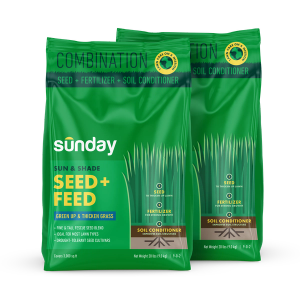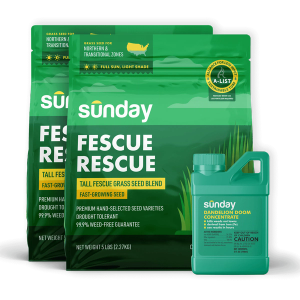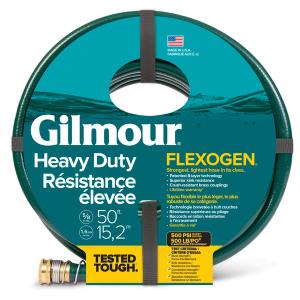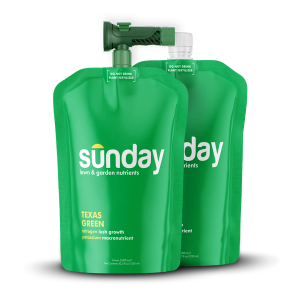Want to know the easiest way to set your lawn up for fewer weeds and thicker turf come spring? It’s called frost seeding.
What is frost seeding?
Frost seeding is the practice of spreading grass seed over dormant lawns during the winter, allowing them to germinate as the ground thaws in spring.
Applying seed during the colder months allows the seed to wait out the winter in place without germinating. This allows seeds to get to work immediately within your lawn when the ground begins to thaw. It's a cool process!

Benefits of frost seeding
This method of seeding is a great addition to fall and spring seeding. It's kind of like preloading your lawn for spring, to ensure fewer weeds and a thicker lawn. Here's why else it's great:
- Makes up for a missed seeding. If you miss fall seeding, no worries! Frost seeding can make up for it.
- Conserves water. This method doesn't require all the watering a typical fall seeding might. Instead, it uses winter precipitation to lock in moisture for next spring.
- It gives your grass a head start! Once the snow melts, the moisture helps the seed take root in the earliest moments of spring—giving your grass a head start, and your lawn a longer growing season.
Where to frost seed
Frost seeding is ideal for cooler climates. This means transitional and northern states with cool-season lawns like fescue, Kentucky bluegrass, and perennial rye. If the ground freezes and snow falls in your area, then your lawn is likely a perfect candidate for this type of seeding!

When to frost seed
Once temperatures consistently hold below 40°F, it’s a good time to frost seed. In most areas, the ideal time is early November to mid-December.
This is usually a sweet spot between when temperatures are low enough to prevent germination, and early enough to avoid snow or ice cover. However,
If you're in a colder, northernmost climate, you may need to frost seed earlier!
Sunday Tip:
Don't frost seed until temps hold consistently below 40 degrees F. Why? Warm temperatures over extended periods of time will trigger germination. So, just wait for temps to hold, then frost seed.
How to frost seed
It's as simple as spreading seeds on the ground. However, the right method is important to ensure seeds make contact with the soil.
Choose your grass seed
Select the best seed for your lawn based on climate conditions.
For cool-season lawns, tall fescue is one of the most versatile, low-maintenance to introduce to your lawn. Bonus: It also stands up to pets, heavy traffic, and drought!
Avoid seeding combination products with fertilizer and seed like Sunday's Bare Repair or Seed + Feed when frost seeding. Applying fertilizer on cold or frozen soils is wasteful and can result in runoff or leaching since the plants are not growing and uptaking the fertilizer.
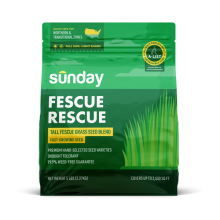
Fescue Rescue Grass Seed
- Drought tolerant
- Medium sunshine
- Northern, transitional climate
- A-LIST low water seed varieties
Mow shorter in the fall
Prepare your lawn in fall or early winter by cutting grass to the optimal short length (usually 2”) at the end of your growing season.
Remove clippings to ensure good seed-to-soil contact.
Plant grass seeds
Spread seed generously and according to the recommended seeding rates.
For best results, seed just before it snows! The weight of the snow can help drive the fresh grass seed into the soil, and the added moisture will help with germination next spring.
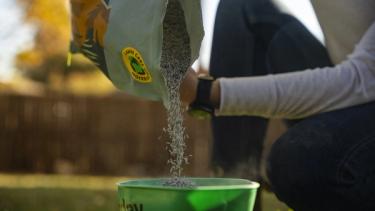
Let nature do the rest
Once grass seed is spread across the lawn, there's nothing left to do but sit back, rest, and let winter work for you and your lawn.
Sunday Tip:
Aren't sure what the best seed for your lawn is? Our new Seed Finder tool helps you choose the best grass seed for your specific lawn needs. Check it out live—and free!—now.







